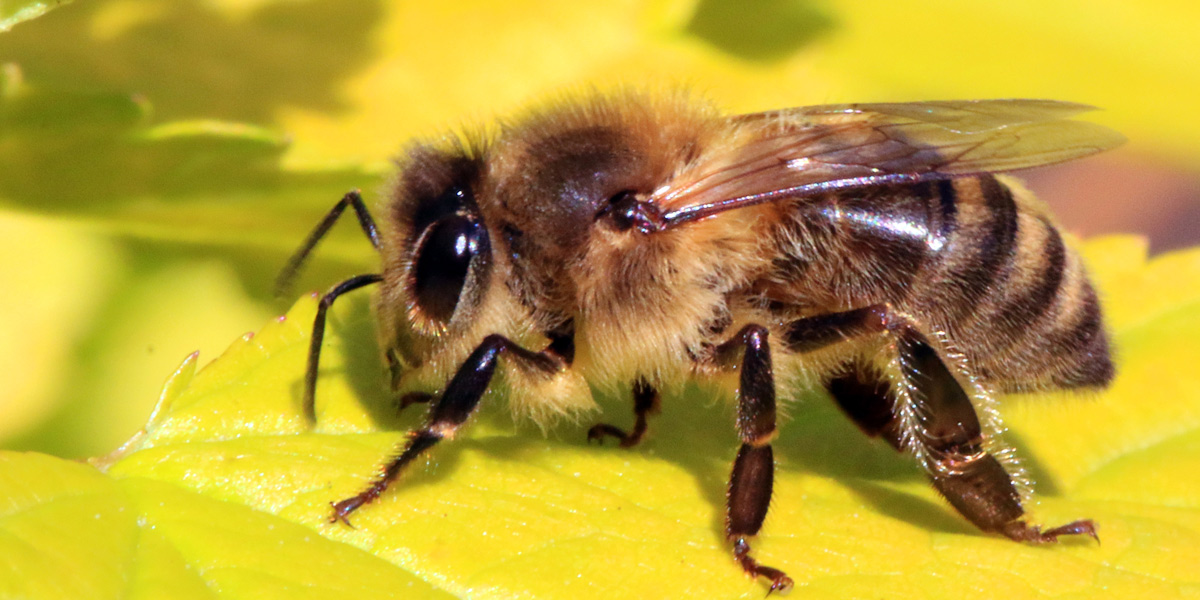
An oilseed crop engineered to have an altered fatty acid profile could reduce the learning ability of bees and other insects
Oilseed crops have recently been genetically engineered by Rothamsted Research in the UK to produce the omega-3 fatty acids, EPA and DHA. These fatty acids are not produced by most terrestrial plants. Rothamsted's aim was to establish a plant-based production facility for omega-3 fatty acids like those found in fish. The researchers engineered an oilseed crop called camelina to produce these fatty acids on land. They claimed that the GMO-derived fatty acids could replace the use of wild fish as feed for farmed fish, and thus supposedly save our fished-out oceans.
However, in an example of the potential unintended and unforeseen consequences of genetic engineering, a study published in 2016 by Stefanie Hixson and colleagues showed that feeding butterfly larvae on these same fatty acids (in this case, not produced from GM crops) resulted in wing deformities and heavier adults. The authors concluded that "further research on the environmental impacts of EPA and DHA production on terrestrial biota is advisable".
Now a review of the literature (see abstract below) on the potential impact of GM omega-3 crops on ecosystems has been published by Canadian and US researchers. The review revisits Hixson and colleagues' butterfly research and describes other risks from genetically engineering oilseed crops to produce EPA and DHA.
For example, the review authors note that while terrestrial insects do not have a known dietary requirement for EPA and DHA, they do have an essential requirement for a precursor called alpha-linolenic acid or ALA, in order to maintain their health, growth, and survival. Honeybees fed ALA-deficient diets had greatly reduced learning abilities in conditioning experiments.
The addition of EPA and DHA into the fat profile of GM camelina proportionally reduces, by at least half (depending on the transgenic line), the ALA content of seed oil relative to non-GMO seed oil. The authors explain, "It is not known if reduced levels of ALA in the crop could lead to a nutritional deficiency with respect to this fatty acid, nor is it known if EPA and DHA can functionally replace ALA in terrestrial invertebrates. The impact that EPA and DHA may have on the biology of terrestrial invertebrates is poorly understood."
The authors warn, "The effects of dietary EPA and DHA on terrestrial insects appears to be variable and merits further investigation. In addition, based on the results of Hixson et al. (2016), and the general lack of information on the physiological effects of dietary EPA and DHA on terrestrial insects, we recommend that broader environmental safety and risk evaluations should be part of the critical assessment process required by global and national regulatory bodies (e.g., Canada Food Inspection Agency, Food and Drug Administration - US, European Union Food Safety Authority, Codex Alimentarius, Food and Agriculture Organization of the United Nations, etc.)."
The authors also conclude that it will be "nearly impossible" to prevent the escape of transgenes from these crops into wild and cultivated relatives, leading to "biochemical, ecological, and evolutionary effects that may be irreversible".
---
Potential for novel production of omega-3 long-chain fatty acids by genetically engineered oilseed plants to alter terrestrial ecosystem dynamics
Stefanie M. Colombo, Lesley G. Campbell, Eric J. Murphy, Sara L. Martin, Michael T. Arts
Agricultural Systems 164 (2018) 31–37
https://www.sciencedirect.com/science/article/pii/S0308521X17306650
Highlights
• EPA and DHA are two omega-3 fatty acids that are not produced by the majority of terrestrial plants.
• Oilseed crops have recently been genetically engineered to produce EPA and DHA.
• Novel production of EPA and DHA by GE-oilseeds may result in unintended ecological and evolutionary effects.
• We recommend that evaluating potential ecological effects from GE-oilseeds should be an integral part of risk assessments.
ABSTRACT
Two bioactive omega-3, long-chain, fatty acids (EPA and DHA), found in algal and fish oils, can now be produced in genetically engineered (GE) terrestrial oilseed crops. These fatty acids are involved in key physiological functions in invertebrates and vertebrates. They are known to be synthesized by primary producers in aquatic ecosystems, but not by terrestrial crop plants. Thus, the production of EPA and DHA by GE seed oil crops represents a fundamental shift in the accessibility of bioactive fatty acids to terrestrial consumers; one that may change their physiology and survival thereby altering ecological interactions among terrestrial organisms. Here we discuss the potential ecological and evolutionary consequences of the novel production of EPA and DHA by GE oilseed crops.